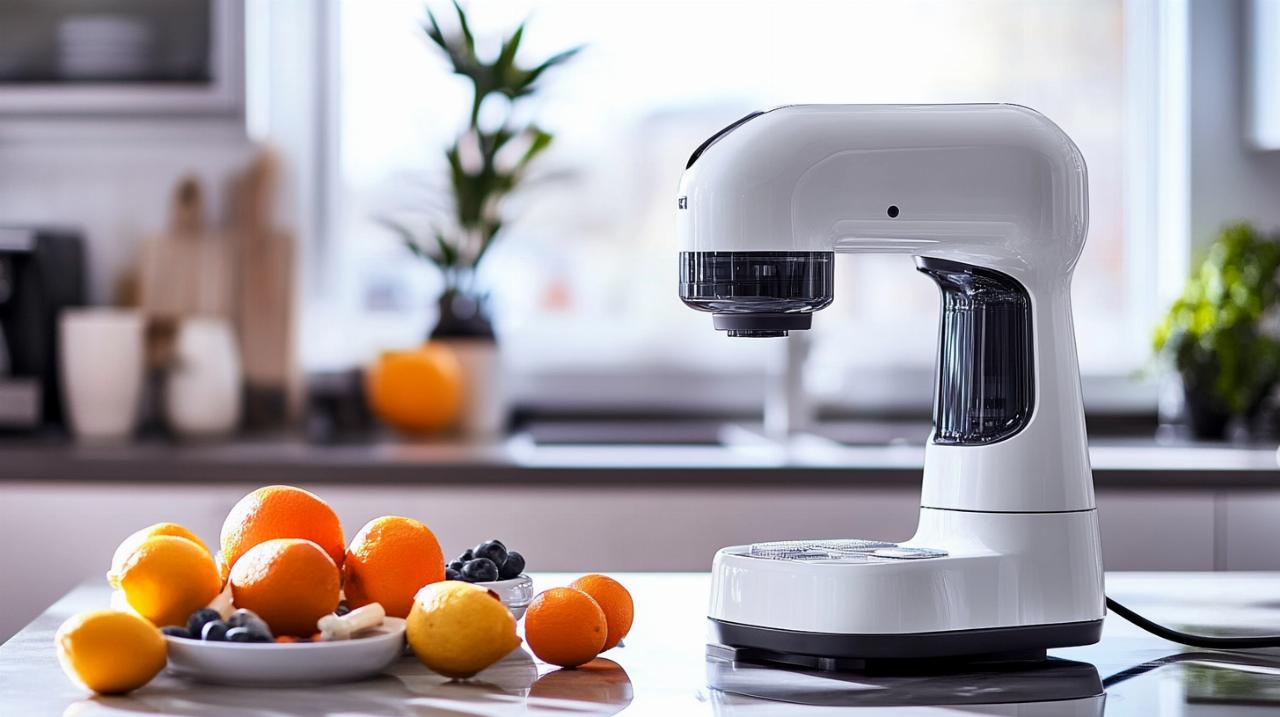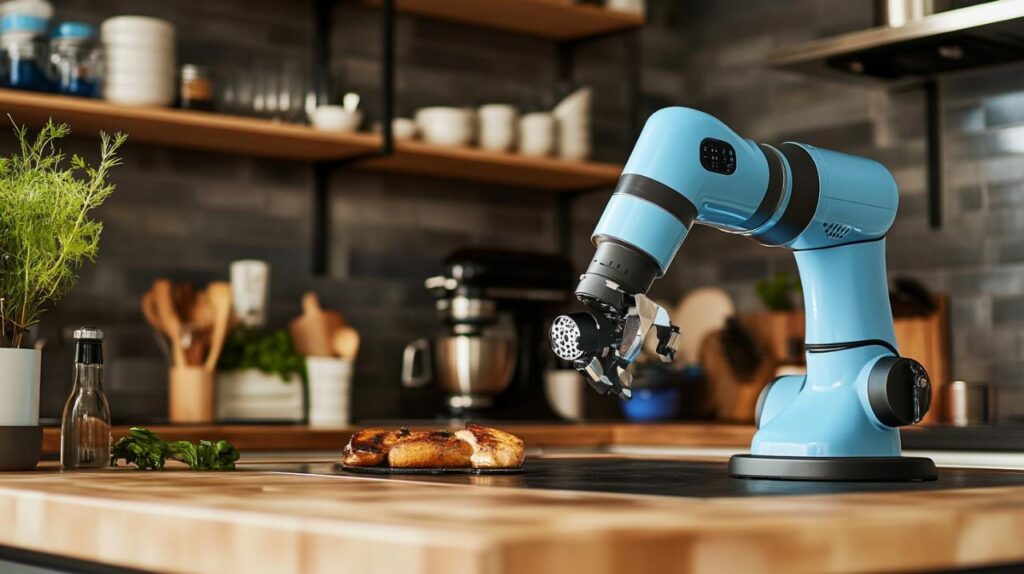Professional kitchens demand equipment that can handle intense workloads whilst delivering consistent, high-quality results. A professional kitchen robot represents a significant investment, one that can transform food preparation processes and streamline operations. Whether you operate a bustling restaurant, a catering business, or a culinary training facility, selecting the right kitchen robot requires careful consideration of numerous factors that directly impact your operational efficiency and culinary output.
Assessing your professional kitchen requirements
Before diving into the vast array of features and specifications available in the market, taking stock of your specific operational needs forms the foundation of making an informed decision. Every professional environment presents unique challenges and demands, and understanding these particulars ensures you invest in equipment that genuinely enhances your kitchen’s capabilities rather than simply adding another appliance to your workspace.
Understanding volume and capacity demands
The volume of food your kitchen processes daily stands as perhaps the most critical factor in determining which professional kitchen robot suits your establishment. A small bistro preparing fresh meals for fifty covers per service faces vastly different requirements compared to a large hotel kitchen serving hundreds of guests during breakfast alone. Bowl capacity becomes a paramount consideration, with many professional-grade models offering capacities ranging from three litres for smaller operations to considerably larger options for high-volume establishments. The ChefRobot Ultracook, for instance, features a three-litre bowl capacity paired with a powerful motor capable of reaching six thousand maximum revolutions per minute, making it suitable for establishments requiring both power and reasonable batch sizes. When evaluating capacity, consider not just your average service requirements but also peak demand periods and special events that might push your kitchen to its limits. A kitchen robot that struggles during your busiest periods becomes a bottleneck rather than an asset, so building in capacity headroom proves wise for growing businesses.
Identifying your most frequent culinary tasks
Different kitchen robots excel at different tasks, and matching these capabilities to your daily operational needs ensures maximum return on investment. Some establishments primarily require assistance with time-consuming preparation tasks such as chopping vegetables, whilst others need comprehensive cooking automation that handles everything from mixing and steaming to baking and stirring. The modern cooking robot market, expected to reach one hundred forty-six point five three billion pounds by twenty thirty-one with an annual growth rate exceeding eleven percent, reflects the increasing sophistication and specialisation available in these appliances. If your menu relies heavily on precise temperature control for delicate sauces or requires consistent mixing for baking applications, prioritising models with wide temperature ranges and intelligent automation features becomes essential. Those seeking to visit shopline blog will find additional insights on evaluating cooking functions against specific menu requirements. The ChefRobot Ultracook, offering over fifteen functions in a single machine, exemplifies the versatility that many professional kitchens now demand, enabling everything from basic food preparation to complete cooking automation without requiring multiple pieces of equipment cluttering valuable workspace.
Key Features to Look for in Professional Kitchen Robots

Once you have established your operational requirements, evaluating specific features and capabilities allows you to narrow down options and identify models that truly meet your professional standards. The difference between consumer-grade kitchen appliances and genuine professional equipment often lies in build quality, consistency, and the ability to withstand continuous daily use without performance degradation.
Power, performance and durability specifications
Motor specifications serve as a reliable indicator of a kitchen robot’s capability to handle demanding professional applications. Insufficient power leads to inconsistent results, longer processing times, and potential motor burnout when faced with dense ingredients or large quantities. High-end models typically feature motors exceeding five thousand revolutions per minute, with the ChefRobot Ultracook reaching six thousand maximum RPM, providing the torque necessary for everything from kneading dense bread doughs to emulsifying sauces. Temperature range capabilities prove equally important, particularly for kitchens requiring precise heat control across various cooking techniques. Built-in scales add another layer of precision, enabling consistent recipe execution and portion control that directly impacts both food quality and cost management. Durability extends beyond raw power to encompass build materials, component quality, and ease of maintenance. Professional equipment must withstand the rigours of daily commercial use, making features like dishwasher-safe components and self-cleaning functionalities valuable time-savers that reduce labour requirements. Safety features including overheat protection and child locks, whilst sometimes overlooked, protect both your investment and your staff, particularly in busy environments where multiple team members interact with the equipment throughout service periods.
Versatility and Attachment Options for Different Applications
The ability to perform multiple functions eliminates the need for numerous single-purpose appliances, freeing valuable kitchen space whilst reducing capital expenditure. Modern professional kitchen robots increasingly incorporate smart home integration, voice control capabilities, and extensive recipe databases that guide users through complex preparations with professional chef simulation features. The three-dimensional cooking engine technology found in advanced models ensures consistent results by precisely managing multiple variables simultaneously, from temperature and timing to stirring speed and ingredient incorporation. Customisation features allowing programming to accommodate specific dietary preferences or signature dishes enable kitchens to maintain their unique culinary identity whilst benefiting from cooking automation. Touchscreen controls and user-friendly interfaces, such as the seven-inch touch screen featured on the ChefRobot Ultracook, reduce training time for new staff members and minimise operational errors during busy service periods. When evaluating versatility, consider not only current menu requirements but also future menu development possibilities. A kitchen robot capable of baking, steaming, mixing, and executing precise cooking techniques provides flexibility for seasonal menu changes and culinary innovation without requiring additional equipment investments. Warranty coverage, customer support availability, and return policies deserve careful scrutiny before finalising your purchase, as these factors determine how quickly operational issues can be resolved and whether your investment remains protected throughout its expected lifespan of five to ten years. Long-term investment thinking recognises that whilst entry-level models starting around three hundred pounds might seem attractive, mid-range options between five hundred and one thousand pounds typically offer superior features and durability, whilst high-end models exceeding one thousand pounds deliver precision and integration capabilities that serious cooking enthusiasts and professional operations demand. The estimated forty thousand pound annual return on investment through labour reduction, food waste minimisation, and cost savings on ready-made meal alternatives demonstrates how the right professional kitchen robot transforms from a capital expense into a revenue-enhancing asset that can recoup its initial cost within just three years whilst elevating food quality and operational consistency.

